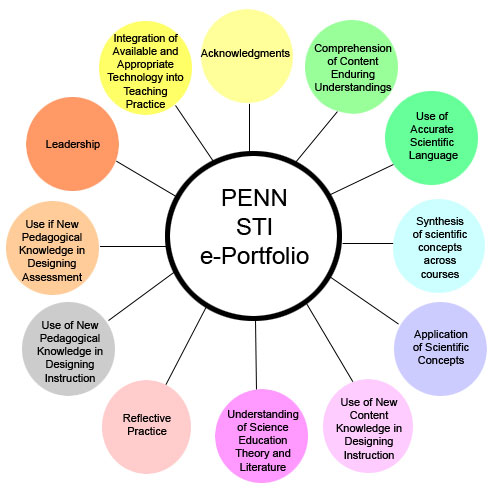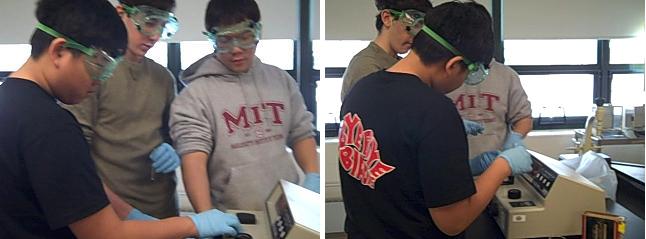This reflection shows how I have grown to become more skilled and sophisticated in my use of appropriate technology [computer software usage, webquests, probes, sensors, smartboards, lab equipment] in classroom practice.
WHAT is the evidence? WHY did I choose the evidence? HOW does the evidence show growth?
Before entering the MCE program, I was still hesitant in my use of certain software programs, the use of certain lab equipment, and the integration of the internet into my teaching. This deficit in my teaching had more to do with my comfort level and exposure than with my ability. As a result of the iterative nature (when it comes to technology, anyway) of MCEP course assignments and labwork, I have gained confidence in my use of certain types of technology from and have been integrating them into my instruction when appropriate.
I present 1 piece of baseline evidence from my original application to the MCEP program and 3 pieces of later evidence. In comparing my baseline and later evidence, I use a conceptual framework that shows:
- INTEGRATION OF APPLETS INTO MY INSTRUCTION
TO IMPROVE VISUALIZATION OF THE SUBMICROSCOPIC ASPECT OF CHEMISTRY (Later
Evidence #1) Applets are animated or user-manipulated
interactive web-based materials (often flash or java applications) that
have immense potential as virtual labs and as visualizations of
difficult abstract concepts. I first became more aware of this
technology through my Web
Analysis
project in Chem501.
I then revisited this technology in preparation for a professional
development I and two other cohort members (Mike Ames and Brad Beckman)
had prepared on Using
Applet POGILs
(Evidence B from Reflection 10) for our Edu636
course. Later
Evidence #1 shows two applets I integrated into my instruction (one as
a model for a POGIL), the other as a visualization aid during lecture.
- INCREASED COMFORT & SOPHISTICATION
IN USING POWERPOINT
AND CHEMDRAW
(Later Evidence #2) Throughout various
courses, I have
been asked to present information with a Powerpoint*. I have also been asked to used
Chemdraw on several occasions to provide clean, professional, and
accurate flowcharts, representations of molecules, and lab
equipment**. Fellow cohort member Mark Hayden and Mike Dappalone
were also kind enough to share powerpoints and technology tips during
informal disussions where we "talked shop" which further catalyzed my
growth in using technology in my classroom. As a result of this
repetition and the accountability provided by graded assignments as
well as continued conversations with cohort members, I
have gotten more comfortable in my use of these programs and further
integrated them into my instruction. Later Evidence #2 shows a
movie of my thesis presentation and a powerpoint presentation I have
used to enhance my light and electromagnetic spectrum lecture in my
Honors Chemistry course; these pieces of evidence demonstrate my increased comfort in using
Powerpoint and Chemdraw. Later Evidence #2 also includes two
samples of student work--a movie
presentation and powerpoint presentation that I used as an
alternative assessment to a written lab report for a periodic law lab
(students last year were
able to choose whether they wanted to make a powerpoint based movie or
a written lab report); these pieces of evidence show how I have
endeavored to make my students
fluent in the use of this technology as well.
- USE OF SPEC20 IN AN AP LAB (Later
Evidence #3) The Spec20 colorimeter
(image*** shown to the right) is a piece of equipment that I knew my
school owned, but I did not integrate it into my courses because I
still felt uncomfortable using it (I don't remember ever using it
during college, though I'm sure I must have). Through my use of
colorimeters
in Chem506 (colorimetric
determination of iron
lab) and in Chem507
(Spec20 lab
exploring
absorption of food coloring; thiocyano-iron(III)
complex
equilibrium lab), I gained the confidence and experience to use the
Spec20 in my courses. Looking at and drawing a diagram
of the
innards of a Spec20 proved immensely useful in understanding how the
Spec20 worked.
*various PIM (Penn Inquiry Model) questions in Chem505; professional development in Edu636; group lesson on digestion in Chem504; thesis presentation in Chem508)
**conformational analysis in Chem501 and Chem502; lab reports in Chem502; lab in Chem506; molecular spectroscopy project in Chem507; thesis in Chem508)
***http://upload.wikimedia.org/wikipedia/commons/a/a9/Spectrophoto-controls.svg


